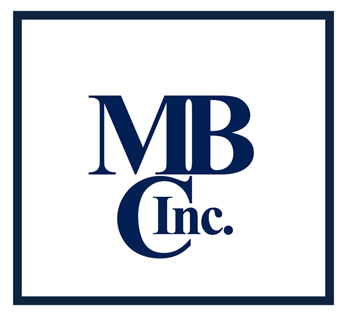Machinery FMEA is a systematic approach to apply the AIAG Machinery FMEA methodologies to equipment and tooling applications. This training course is based on the AIAG Machinery FMEA Manual 2nd Edition.
Martin Business Consulting, Inc. has developed a training course based on the AIAG Machinery and Tooling FMEA 2nd Edition. The purpose of this training is to assist organizations in the development of Machinery and Tooling FMEAs.
The benefits of the MFMEA process are multifaceted and are as effective as the implementation program facilitated by the active management driven organization.
MFMEA uses a common approach to address the defined function and expectations of the expected output of a machine or tool. The MFMEA evaluates the potential machine or tool failure modes and the effects to the customer, either internal or external.
Additionally Machinery and Tooling FMEA assist in the identification of causes of failure and the degree of risk associated with a specific failure mode.
A great benefit of the Machinery and Tooling FMEA process comes from an increase in the knowledge generated by the FMEA team as they work systematically through the functions, outputs, and capability of a specific machine or tool. The Machinery and Tooling FMEA addresses the machinery and tooling at the system, sub-system, or component level.
This course teaches the participants how to address the following:
What should happen?——————————————————–>The Requirement
What could potentially go wrong?————————————–>The Failure Mode
What are the consequences of the failure?—————————>The Effect on the Customer
What are the potential causes of the failure mode?————–> The Root Cause of the Failure
What can the organization do?——————————————> The Current Controls
Are there additional steps the organization can take?———-> The Corrective/Preventative Action
The Machinery and Tooling FMEA
1. The Machinery FMEA supports the objective evaluation and understanding of the “Work-Flow” of a specific machine or tool.
2. MFMEA brings about a greater probability that identified failure modes and their effect on the customer are considered.
3. The MFMEA provides additional information as input into effective and efficient preventative
maintenance planning.
4. MFMEA may lead to improvement in machine and tooling reliability and durability, resulting in a reduction in life cycle cost.
5. MFMEA may also improve maintainability, resulting in reducing the MTTR (Mean Time To Repair).
6. MFMEA may bring about improvement in machinery availability.
7. The Machinery and Tooling FMEA process brings about a ranked list of action items based on RPN or other identified factors. This process creates a prioritized system for corrective and preventative action.
Course Outline;
1. Introduction a. The AIAG Machinery FMEA Manual (Purpose)b. Follow-up and Continuous Improvement
c. Benefits of the Machinery FMEA 2. Overview of the Machinery FMEA Process a. Approach b. Basic Structure c. Development of the FMEA for Machinery or Tooling d. Eleven Critical Steps to Success (The WHY of MFMEA) i. Identifying the Team 1. Benefit, 2. Team Makeup, 3. Organization, 4. Structure, 5. Roles, 6. Communication, 7. Documentation ii. Definition of the Machinery FMEA Scope iii. Customer Definition iv. Identification of: 1. Functions a. Concise Machine Functions, b. Requirements, c. Specifications, d. and/or Design Intent Capability e. Maintenance Accessibility Definition is at the Discretion of the Using Organization v. Identification of the Potential Failure Modes vi. Identification of the Effects of Failure 1. Recorded in the language of the Internal or External Customer a. External Customers may be; i. Next Plant, ii. OEM or iii. End User vii. Identification of the Actual and Potential Causes of the Failures viii. Identification of Controls 1. Controls for Prevention 2. Controls for Detection 3. Controls for Mitigation ix. The Identification and Assessment of Risk (RPN) 1. Severity 2. Occurrence 3. Detection x.Recommendation of Actions to Minimize Risk and the Recording of Actual Results 1. Ensuring Design Requirements are Meet 2. Review of Engineering Documents 3. Confirming Incorporation into Manufacturing and/or Assembly 4. Review of Related Process FMEAs, Process Control Plans and Work Instructions xi. Management Responsibility 1. Managements Ownership a. What are the Responsibilities of the Various Levels of Management? 2. Managements Direct Support a. What Actions can and/or Should Top and Middle Level Management Take in the Support Arena of Machinery FMEA? 3. Machinery Failure Modes and Effects Analysis (MFMEA) a. Introduction and Benefits i. Support for Machinery Design Process ii. Objective Evaluation of Machine Design iii. Evaluation of the Initial Design iv. Providing Additional Information v.Ranked List of Potential Failures vi. Tracking Improvement Actions vii. Adding to Future Reference Data viii. The MFMEA as a Living Document 1. Initiated Prior to Design Finalization 2. Updated as Changes Develop 3. Basically Complete Prior to Production Design Release 4. Input to Lessons Learned b. Development of the MFMEA Form i. Header Information ii. Body of the MFMEA Form 1. Functions 2. Requirements 3. Failure Modes 4. Effects of Failures 5. Severity of Failure on a Scale of 1 to 10 6. Occurrence on a Scale of 1 to 10 7. Detection on a Scale of 1 to 10 8. Causes of Failures 9. Controls a. Prevention b. Detection c. Mitigation 10. RPN and Use of RPN 11. Recommendation for Action of High Risk Items a. Recommendation b. Assignment of Responsibility c. Target Date for Completion d. Action Results e. Action Taken f. Action Evaluation 4. Efficiency of Approach or Work Organization a. What are the Requirements and How are They Defined at the System, Sub-system and Component Level i. System Level MFMEA Addresses 1. The Interfaces and Interactions that make up the Sub-systems ii. Sub-system Level MFMEA Addresses 1. The Interfaces and Interactions that make up the Components that make up the Sub-systems iii. Component Level MFMEA Addresses 1. Focus in on the Sub-sets of the Sub-systems such as; end of arm Tooling e.g. Weld Gun, Gripper, etc.
For Additional Information contact:
E-mail – BMartin@MBCIncorp.com
